Samyang 135 mm f/2.0 ED UMC
3. Build quality
In the photo below the Samyang 2/135 is positioned next to two macro 2.8/100 lenses: the Samyang 100 mm f/2.8 Macro and the Canon EF 100 mm f/2.8L IS USM Macro.
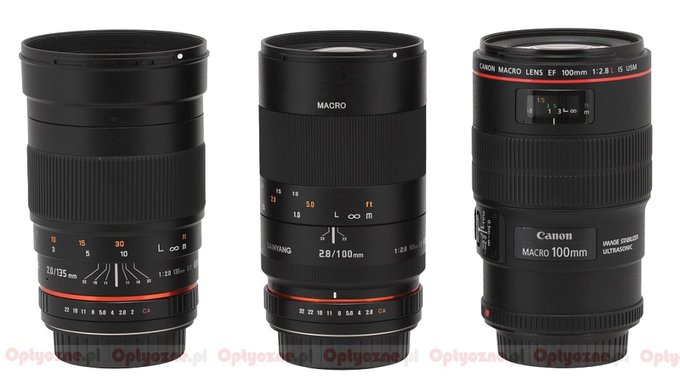 |
Please Support UsIf you enjoy our reviews and articles, and you want us to continue our work please, support our website by donating through PayPal. The funds are going to be used for paying our editorial team, renting servers, and equipping our testing studio; only that way we will be able to continue providing you interesting content for free. |
- - - - - - - - - - - - - - - - - - - - - - - - - - - - - - - - - - - - - - - - - - - - - - - -
The Samyang 135 mm f/2.0 ED UMC starts with a metal mount which, when you deal with a Canon version, is devoid of any contacts. Pity we have to wait so long because the Nikon F version has been given contacts long time ago. As a result the camera body won’t get any info concerning the focal length and the aperture used. The lens’s rear element is 34 mm in diameter and it is situated almost on the same level as the mount if you set the focus at infinity. When you pass to the minimum focusing distance the lens shifts along with the whole system and hides inside a tube about 4 cm deep. The interior of the tube is properly matted and blackened.
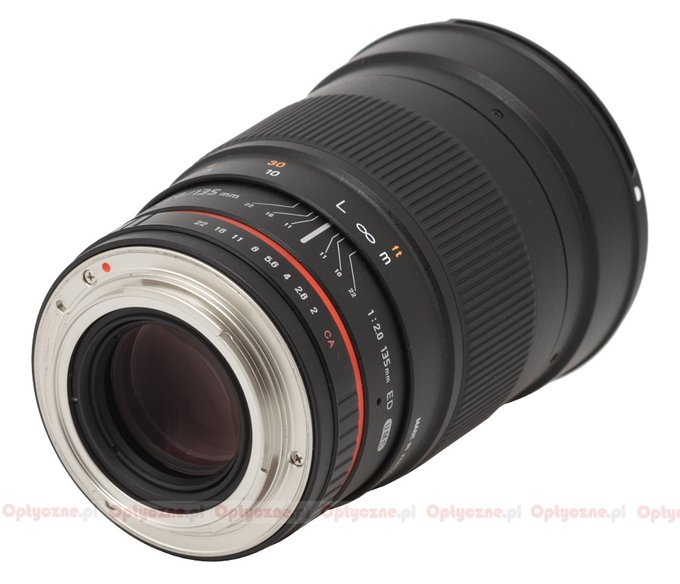 |
The proper body of the lens starts with a small, immobile ring which soon turns into an aperture ring which is 9 mm wide and works every 0.5 EV step.
The next part is a stationary red stripe; it turns into another permanently fixed part of the casing on which you can find a depth of field scale with markings by f/22, f/16 and f/11 apertures. Next to it there are the name and the parameters of the lens.
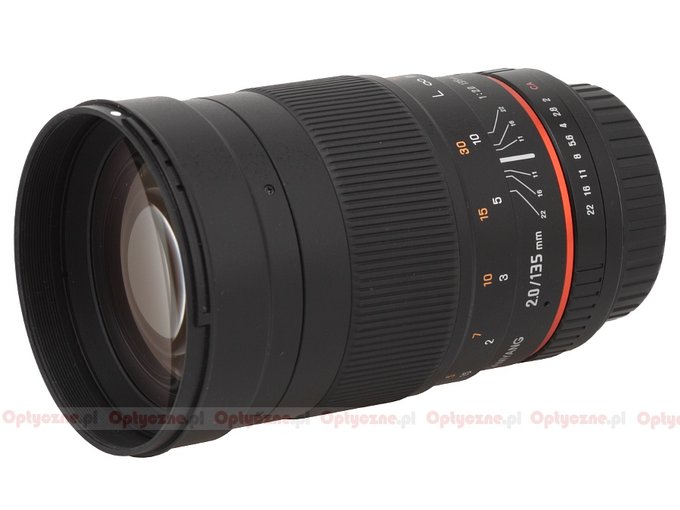 |
The biggest part of the tube is a manual focus ring as wide as 59 mm. Most of its surface is covered by rubber ribbing and underneath you can find a distance scale expressed in feet and meters along with information that the lens was made in Korea. The ring itself moves smoothly and is well-damped. Running through the whole range needs a turn through an angle of about 190 degrees. It is a sensible value, allowing very precise settings but it’s worth mentioning here that the rival Zeiss Apo-Sonnar 2/135 provided a noticeably wider angle, that of 270 degrees.
Behind the focus ring you see also an immobile part of the casing which ends with a hood mount.
The front element of the lens is 65 mm in diameter, surrounded by a filter thread, 77 mm in diameter, which doesn’t rotate.
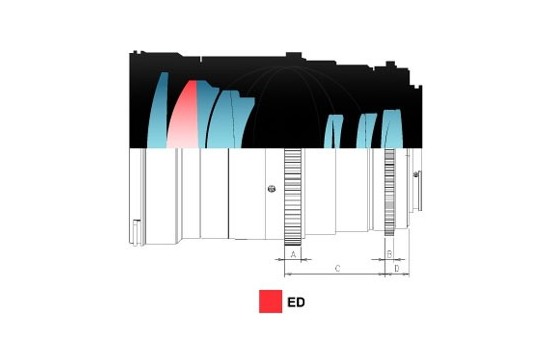 |
When it comes to the optical construction you deal here with 11 elements set in 7 groups. One element is made of low dispersion ED glass. Inside there is also a round aperture with nine blades which can be closed down to f/22.
Buyers get both caps, a hood and a soft pouch in the box.
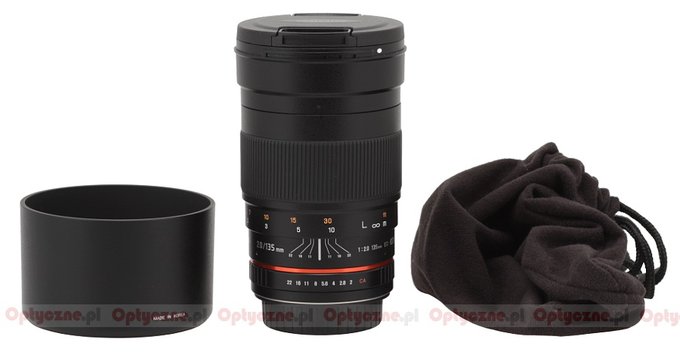 |






